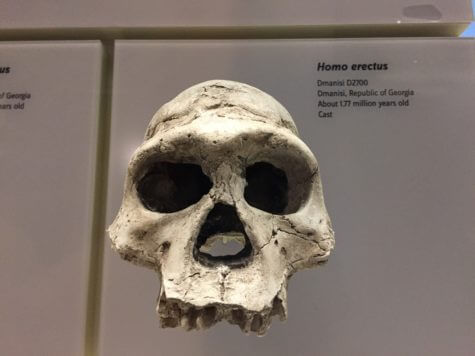
Humanlike cognition evolved 1.8 million years ago, a new study finds.
IOWA CITY, Iowa — Analysis of the human brain shows that transition from apelike to humanlike thinking wasn't as distant as you might think, a new study finds.
Using brain imaging technology — what's known as near-infrared spectroscopy — to analyze modern people attempting to create two separate ancient tools, researchers at Indiana University determined evidence suggests that the humanlike patterns of thinking used by participants may have potentially emerged nearly 1.8 million years before our present day. The neuroarchaeologists' findings estimate that the development of such humanlike cognition occurred near the emergence of the Homo erectus, or “upright man,” whose presence in Africa predates Neanderthals by almost 600,000 years.
“This is a significant result because it's commonly thought our most modern forms of cognition only appeared very recently in terms of human evolutionary history,” says study co-author Shelby S. Putt, a postdoctoral researcher with The Stone Age Institute at the university, in a press release. “But these results suggest the transition from apelike to humanlike ways of thinking and behaving arose surprisingly early.”
Previous studies on the topic were limited to a functional magnetic resonance imaging machine, described by the study authors as basically a narrow mental tube. This study had the benefit of recent brain imaging technology to observe visual, auditory and sensorimotor brain activity in the participants as they learned to craft the two distinct types of tools manually. One group used verbal instruction via videotape while another watched the same video without audio in order to learn by nonverbal observation.

Fifteen volunteers were taught to craft a more complex Acheulean-era hand axe — used from 1.8 million to 100,000 years ago — versus a simpler Oldowan-era “flake tool,” which study authors described as “little more than broken rocks with a jagged edge” similar to a large arrowhead. The Oldowan tools first emerged about 2.6 million years ago and are considered among the first used by human ancestors. The formation of both kinds of tools used a process of smashing rocks together referred to as “flintknapping.”
Putt acknowledged the difficulty for neuroarchaeologists given that the evolution of human cognition left behind no physical trace — unlike fossils or artifacts.
The brain scans showed that Acheulian tool production required the use of much more of the brain, including the visual, auditory and sensorimotor information as well as higher-order action planning. The simpler Oldowan tools used visual attention and motor control information. The researchers noted that “Acheulian toolmaking may have more evolutionary ties to playing Mozart than quoting Shakespeare.”
“The fact that these more advanced forms of cognition were required to create Acheulean hand axes — but not simpler Oldowan tools — means the date for this more humanlike type of cognition can be pushed back to at least 1.8 million years ago, the earliest these tools are found in the archaeological record,” says Putt. “Strikingly, these parts of the brain are the same areas engaged in modern activities like playing the piano.”
The experiments were conducted at the University of Iowa. Sobanawartiny Wijeakumar of the University of East Anglia and Robert Franciscus of the University of Iowa were co-authors on the study published on May 8 in the journal Nature Human Behavior.










